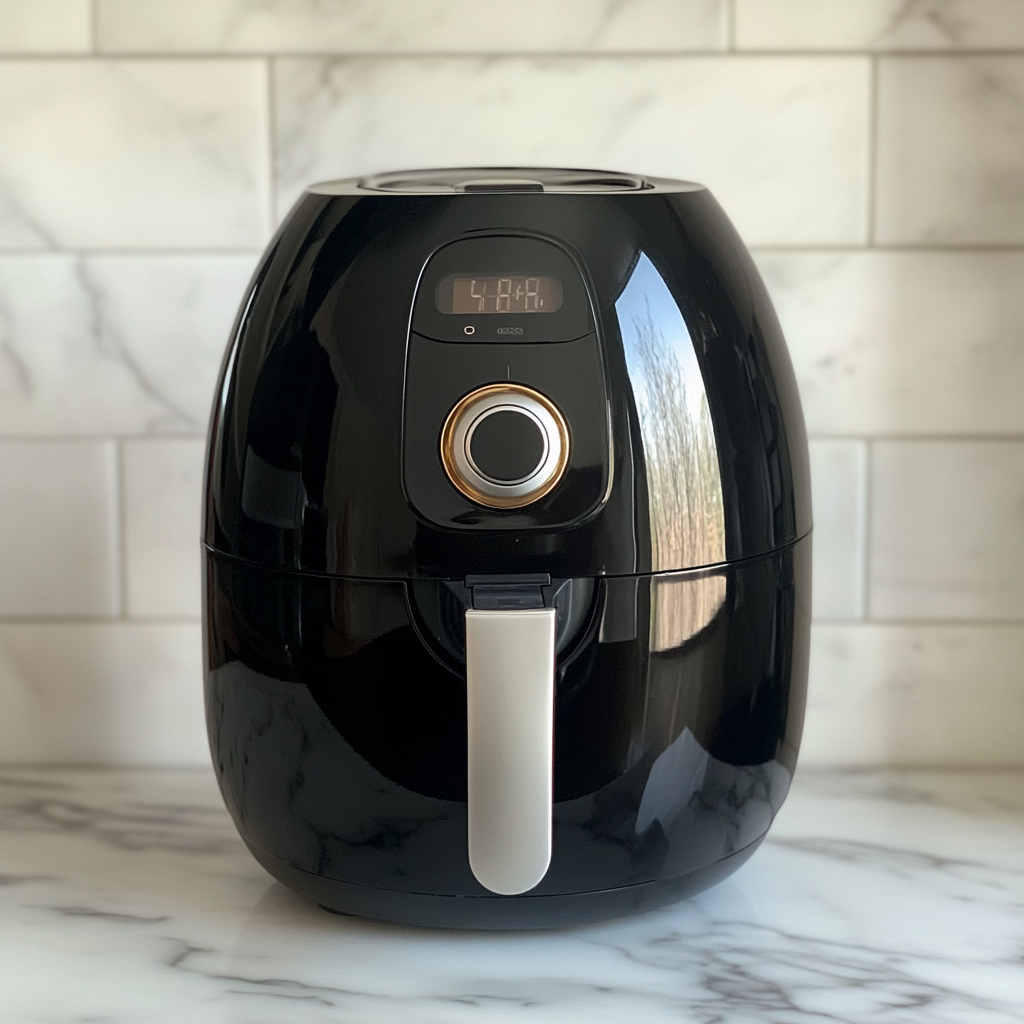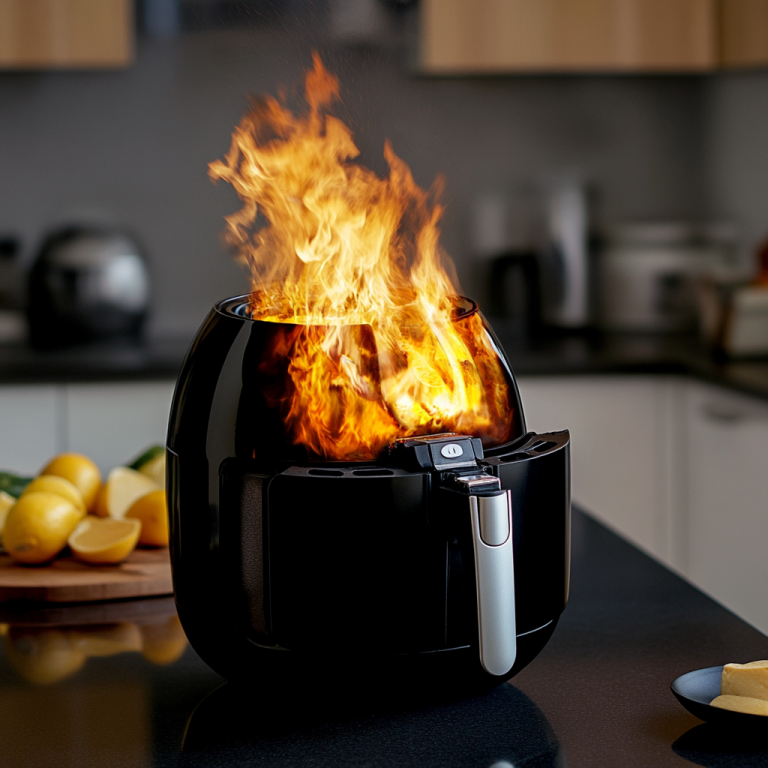Air Fryer Temperature Troubleshooting: Quick Fixes For Perfect Cooking
Air fryers have changed the way we cook, offering a healthier alternative to frying with minimal oil. Understanding air fryer temperature is crucial for achieving perfectly cooked meals. This article explores how air fryers operate, common issues with temperature settings, and effective troubleshooting tips. Whether you’re dealing with inconsistent cooking or incorrect temperature readings, we provide maintenance and care techniques to keep your air fryer functioning well. Get ready to elevate your air frying experience!
Understanding Air Fryer Temperature
Understanding air fryer temperature is essential for achieving optimal cooking results and desired food texture. This involves mastering various cooking temperatures and maintaining precise temperature control throughout the cooking process. The air fryer employs a heating element and efficient air circulation to produce a crispy exterior while retaining moisture, facilitating healthier cooking methods with minimal oil usage. Furthermore, following safety guidelines and consulting the user manual can enhance the overall cooking experience, ensuring the long-lasting performance of this countertop appliance. Familiarity with cooking charts and appliance settings will enable effective recipe adjustments and promote consistent results.
How Air Fryers Work and Temperature Ranges
Air fryers operate through a powerful heating element combined with rapid air circulation, which creates a convection effect. This mechanism allows for even cooking across a range of temperatures, making it suitable for various cooking methods, including frying, roasting, and baking. The innovative design of air fryers not only ensures uniform heat distribution but also significantly reduces cooking time in comparison to traditional ovens. With adjustable temperature settings, these appliances can easily transition from crisping delicate pastries to achieving a perfect sear on meats. Energy efficiency represents another key advantage, as air fryers consume less electricity, leading to lower utility bills while still delivering high-performance results. Manufacturers conduct rigorous testing to fine-tune the heating elements, ensuring consistent performance and providing home cooks with the confidence to create delicious meals without the excess oil typically associated with traditional frying methods.
Common Issues with Air Fryer Temperature
Common issues related to air fryer temperature can substantially affect cooking outcomes, resulting in inaccurate temperature readings and inconsistent food textures. These discrepancies may arise from user errors, model-specific concerns, or performance-related problems with the appliance. Identifying these prevalent issues and implementing appropriate troubleshooting strategies can greatly improve the air frying experience. Users frequently underestimate the significance of calibrating the temperature gauge and understanding appliance-specific settings, both of which are essential for achieving precise cooking results.
Inconsistent Cooking
Inconsistent cooking in an air fryer can lead to a suboptimal culinary experience, as variations in cooking time and temperature can adversely affect the desired texture and overall quality of the dish. This inconsistency often arises from user errors, such as overcrowding the basket or failing to preheat the appliance adequately. When multiple items are packed tightly, the circulation of hot air is impeded, resulting in uneven cooking. Additionally, incorrect settings for cooking time can leave food undercooked in certain areas while burning it in others. To mitigate these issues, it is essential to adhere to recommended guidelines regarding both the type and quantity of food, thereby ensuring an optimal balance that enables the air fryer to operate effectively. Furthermore, regularly checking and adjusting cooking times according to specific recipes can significantly enhance results, achieving the perfect texture and flavour consistently.
Incorrect Temperature Readings
Incorrect temperature readings can result in significant variations in cooking outcomes, making it imperative to comprehend the temperature control mechanisms within an air fryer, including the function of the digital display and the calibration of the temperature gauge. When the temperature is not set accurately, a recipe may produce undercooked or overcooked meals, potentially compromising both flavour and food safety. To mitigate these issues, it is essential to regularly calibrate the temperature settings of the air fryer. This calibration process can be accomplished by comparing the air fryer s temperature readings with those of an external thermometer, carefully noting any discrepancies. Understanding how the cooking settings interact with the digital display not only facilitates the achievement of perfectly cooked dishes but also contributes to the appliance’s longevity. Familiarity with the specific temperature ranges required for different recipes can result in consistently favourable cooking outcomes.
Owala FreeSip Insulated Stainless Steel Water Bottle with Straw for Sports and Travel, BPA-Free, 24-oz, Blue/Teal (Denim)
$24.99 (as of 21:21 GMT +00:00 - More info)Troubleshooting Air Fryer Temperature
Troubleshooting air fryer temperature requires the identification of any malfunctioning components and the implementation of adjustment strategies to enhance cooking results. This approach ultimately fosters improved user experiences and ensures consistent outcomes.
Checking for Malfunctioning Parts
Checking for malfunctioning components is a critical step in troubleshooting temperature issues with air fryers, with particular emphasis on the heating element, as its proper functioning is vital for achieving optimal cooking results. When examining these components, it is imperative to proceed with caution and a systematic approach. Users should consult the instruction manual specific to their model, as it offers valuable insights into common issues and effective troubleshooting techniques. Safety considerations are paramount; ensuring that the appliance is disconnected from the mains before inspecting any internal parts can mitigate the risk of unforeseen accidents. Taking the time to recognize warning signs, such as unusual noises or incomplete cooking, can facilitate the early identification of problems. Addressing these concerns promptly not only improves the cooking process but also extends the overall lifespan of the appliance.
Adjusting Cooking Techniques
Adjusting cooking techniques is crucial for attaining the desired texture and flavour of food, enabling users to refine their air frying process through appropriate recipe modifications and troubleshooting strategies. By investigating various cooking methods such as boiling, steaming, roasting, and grilling individuals can gain a deeper understanding of how each technique impacts the final result. For example, when roasting vegetables, utilising a higher temperature fosters the coveted caramelisation, while steaming necessitates gentler heat to preserve vibrant colours and nutrients. Furthermore, adapting these methods is essential; for instance, incorporating marination for proteins can significantly enhance flavour, while modifying cooking times based on thickness and density ensures consistent results. Users should also consider making slight adjustments to cooking time and temperature when transitioning between methods, such as converting a recipe designed for conventional oven baking to air frying, thereby ensuring that each dish achieves its optimal potential.
Maintenance and Care for Proper Air Fryer Temperature
Regular maintenance and care are essential for ensuring optimal air fryer temperature performance. Cleanliness, along with consideration of appliance size and cooking capacity, directly affects both user experience and the longevity of the appliance.
Cleaning and Maintenance Tips
Cleaning and maintenance tips for air fryers are crucial for preserving the durability of the appliance and ensuring optimal cooking performance, ultimately leading to an enhanced user experience and increased longevity of the device. By integrating these straightforward practices into your routine, one can significantly improve the air fryer’s efficiency while also minimising the likelihood of cooking mishaps. Regular inspection and cleaning of the basket after each use are essential, as food particles may become trapped and adversely affect cooking results. It is advisable to wipe down the exterior with a damp cloth to prevent the accumulation of grease or residue over time. Furthermore, refraining from the use of harsh chemicals will help maintain the integrity of the non-stick surfaces, thereby fostering a healthier cooking environment and extending the appliance’s lifespan. Collectively, these strategies will ensure that the air fryer remains a dependable kitchen companion for years to come.
Replacing Parts as Needed
Replacing parts as necessary is a vital component of air fryer maintenance, ensuring that all elements operate optimally while adhering to the guidelines specified in the user manual to prevent warranty complications. Users may observe various indicators signalling the need for replacement, such as unusual noises, diminished cooking performance, or an increase in smoke emission. These symptoms often highlight common components that tend to degrade over time, including heating elements, baskets, and seals. If any of these components exhibit significant wear or malfunction, it is advisable to arrange for their replacement promptly. If there is issues with the air fryer that fall within the scope of warranty coverage, accessing support generally entails contacting the manufacturer via their customer service channels. Users should provide proof of purchase and a detailed account of the specific problem encountered.










